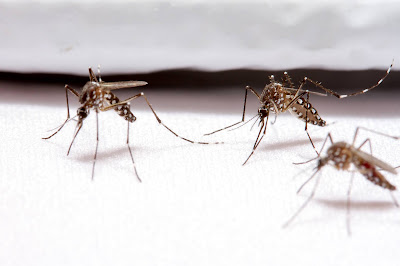Special Clothing Halts Mosquito Bites, NC researchers find
North Carolina State University researchers say they have created insecticide-free, mosquito-resistant clothing using textile materials. In a press release issued last week, North Carolina said this was proven in experiments with live mosquitoes after developing materials from a computational model of their own design.
Researchers modeled for the behavior of Aedes aegypti, the mosquito that carries viruses that cause human diseases like Dengue fever, yellow fever and Zeka, prompting the experiments detailed in the journal Insects. In encounters with the pesky insects, they prevented 100 percent of bites when a volunteer wore their special clothing - a base layer undergarment and a combat shirt initially designed for the military - in a cage with 200 live, disease-free mosquitoes. Researchers think their computational model could be used more widely to develop clothing to reduce transmission of disease.
"The fabric is proven to work - that's the great thing we discovered," co-author of the study Andre West, associate professor of fashion and textile design at NC State, was quoted as saying in the press release. "To me, that's revolutionary. We found we can prevent the mosquito from pushing throught the fabric, while others were thick enough to prevent it from reaching the skin."
To develop the computational model to design textile materials that could prevent bites, researchers investigated the dimensions of the head, antenna and mouth of A. aegypti and the mechanics of how it bites. The model was then used to predict textiles that would prevent bites, depending on pore size and thickness. Researchers believe the materials could be effective against other mosquito species in addition to A. aegypti because of similarities in biology and biting behavior, the statement reads.
To ascertain accuracy, the researchers tested the materials predicted to be bite-proof. In experiments they surrounded a blood reservoir with plastic materials made according to parameters predicted by the model. They then counted how many mosquitoes became engorged with blood.
One material they initially tested was very thin – less than a millimeter thick – but had a very small pore size to prevent the mosquito from sticking its mouth parts, or proboscis, through the material. Another material had a medium pore size to prevent the mosquito from inserting its head through the textile far enough to reach the skin; and a third material had larger pores, but was sufficiently thick that the mosquito’s mouth still couldn’t reach the skin.
In a subsequent test, the researchers chose a series of knitted and woven fabrics that met the bite-proof parameters determined by the model, validating they worked in experiments using both the blood reservoir and human volunteers. The researchers tested the number of bites received by volunteers when study participants inserted an arm covered by a protective sleeve into a mosquito cage. The researchers also compared the fabrics’ ability to prevent bites and repel mosquitoes to fabrics treated with an insecticide.
From what they learned in early experiments, researchers developed the bite-resistant, form-fitting undergarment made with a thin material, as well as the aforementioned combat design, a long-sleeved shirt.
When a volunteer wore the garments sitting for 10 minutes and standing for 10 minutes in a walk-in cage with 200 hungry mosquitos, the volunteer found the combat shirt was 100 percent effective at preventing bites. In the first trial testing the base layer, the volunteer received bites on the back and shoulders – seven bites for 200 mosquitoes. The researchers attributed the bites to the fabric stretching and deforming, so they doubled the material layer around the shoulders, and were ultimately able to prevent 100 percent of bites.
“The final garments that were produced were 100 percent bite-resistant,” said Michael Roe, William Neal Reynolds Distinguished Professor of Entomology at NC State, in the press release. “Everyday clothing you wear in the summer is not bite-resistant to mosquitoes. Our work has shown that it doesn’t have to be that way. Clothes that you wear every day can be made bite-resistant. Ultimately, the idea is to have a model that will cover all possible garments that person would ever want – both for the military as well as for private use.”
The study, “Mosquito-textile physics: A mathematical roadmap to insecticide-free, bite-proof clothing for everyday life,” was published online this month, July 2021, in the journal Insects. It was authored by Luan, Roe, West, Charles Apperson, Marian McCord, Emiel DenHartog, Quan Shi, Nicholas Travanty, Robert Mitchell, Grayson Cave, John Strider and Youngxin Wang from NC State University and Isa Bettermann, Florian Neumann and Tobias Beck from Aachen University, Germany. The study was supported by the National Science Foundation, the Department of Defense Deployed War Fighter Program, Natick Contracting Division of the U.S. Department of Defense, the Chancellor’s Innovation Fund at NC State, the Southeast Center for Agricultural Health and Injury Prevention, PILOTS and the NC Agriculture Research Experiment Station.
Photo: : Mosquitoes land on fabric during an in vivo bioassay in which they fail to probe through the fabric due to its small pore size. The proboscis (sucking organ) on the mosquito bends when it tries to push through the fabric. Used with permission, Matt Bertone, North Carolina State




Comments
Post a Comment